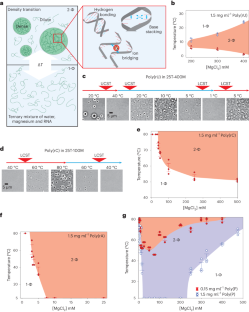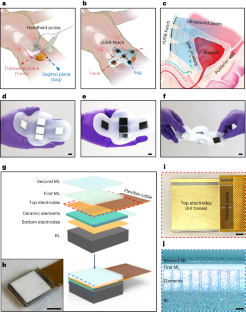2023-11-16 バッファロー大学(UB)
◆これまでの研究は主にタンパク質に焦点を当てていましたが、今回の研究ではRNAがこのプロセスにどのように影響を与えるかが詳細に調査され、RNAがタンパク質の相分離を調節するだけでなく、独自の役割を果たす可能性があることが明らかになりました。
<関連情報>
- https://www.buffalo.edu/news/releases/2023/11/rna-solo-act-on-the-ever-changing-stage-of-cellular-dynamics.html
- https://www.nature.com/articles/s41557-023-01353-4
RNAは低い臨界溶液温度で相転移を起こす RNAs undergo phase transitions with lower critical solution temperatures
Gable M. Wadsworth,Walter J. Zahurancik,Xiangze Zeng,Paul Pullara,Lien B. Lai,Vaishnavi Sidharthan,Rohit V. Pappu,Venkat Gopalan & Priya R. Banerjee
Nature Chemistry Published:06 November 2023
DOI:https://doi.org/10.1038/s41557-023-01353-4

Abstract
Co-phase separation of RNAs and RNA-binding proteins drives the biogenesis of ribonucleoprotein granules. RNAs can also undergo phase transitions in the absence of proteins. However, the physicochemical driving forces of protein-free, RNA-driven phase transitions remain unclear. Here we report that various types of RNA undergo phase separation with system-specific lower critical solution temperatures. This entropically driven phase separation is an intrinsic feature of the phosphate backbone that requires Mg2+ ions and is modulated by RNA bases. RNA-only condensates can additionally undergo enthalpically favourable percolation transitions within dense phases. This is enabled by a combination of Mg2+-dependent bridging interactions between phosphate groups and RNA-specific base stacking and base pairing. Phase separation coupled to percolation can cause dynamic arrest of RNAs within condensates and suppress the catalytic activity of an RNase P ribozyme. Our work highlights the need to incorporate RNA-driven phase transitions into models for ribonucleoprotein granule biogenesis.


